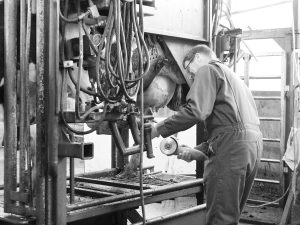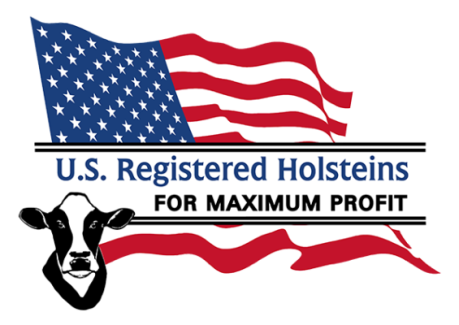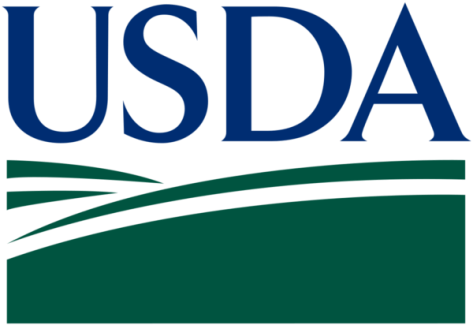For decades now, people around the world have mastered the art of hoof trimming. Although there have been many technology advances that have brought chiseling hooves with only knives and a hammer to now using power tools and chutes, the hoof trimming artist has always maintained the same mentality: to have a cow that can walk comfortability without any trouble or pain. Providing their own strategies, Kiyoshi Kamei (Ontario, Canada), Koos Vis (Alberta, Canada) and David Gray (Lanarkshire, Scotland) have shared their knowledge on how to create a well-functioning dairy that maintains cow comfort and longevity.

Kiyoshi Kamei
During the 1970’s, Kiyoshi Kamei started working at two dairy farms, Bond Haven and Glenafton, where he began to learn about hoof health from Mr. Hank Vanderpost. When Mr. Vanderpost would visit these farms to hoof trim, Kiyoshi would gladly help out and couldn’t help but notice the difference of how the
cattle walked before and after having their hooves trimmed. In 1983, Kiyoshi decided to pursue hoof trimming as a career and has continued to be active in this profession based out of a small-town west of Bradford, Ontario in Canada.
Koos Vis
Koos’ history with dairy farming began in the Netherlands where he attended an agricultural college for 3 years and specialized in dairy management. Right after college, he immigrated from the Netherlands to Southern Alberta, Canada, where he worked until 1997 as a dairy herdsman. In 1996, Diamond Hoof Care Ltd. was created. He travelled to PTC Dier in Oenkerk in the Netherlands to receive hoof care
training from Mr. Pieter Kloosterman and is thankful for all the fond memories and knowledge that he gained on that trip.
Koos believes that a turning point in his career and professional education was in 2006, when he established a connection with Intracare BV in the Netherlands. His hoof trimming friends in the Netherlands told Koos thatabout Intracare manufactures , a ready-to-use product for treating digital dermatitis that is safe for both the user and the environment. Being a faithful user and promoter of
tetracycline mixers at that time, Koos was understandably very reluctant at first. His family doctor had warned him that the excessive use of tetra power would come back to bite him sooner or later. The Intra Hhoof-fit product line made an entry into his trimming business, and he did many trails and tests, including comparisons to antibiotics, before he promoted this product. Moving away from tetracycline
David Gray
David Gray hails from Lanarkshire, Scotland, where he has held the profession of a fulltime Bovine Claw Technician for over 14 years and runs a hoof trimming business called “Hoof & Hyde Ltd”. Before starting Hoof & Hyde, David was a successful dairy cattle fitter for 8 years and was fortunate enough to travel to 9 different countries. However, in 2002, David realized that it was time for him to settle down and he wanted to do so in Scotland. After numerous conversations with Nick Challenor, a good friend of his that used to be a hoof trimmer, David decided to book himself into a professional hoof trimming course and pursue it as a full-time profession in 2002.
What different hoof trimming tools have you used over your career? How has technology improved to help you succeed in your job and provide cow comfort?
Kiyoshi: When I first started, I incorporated a simple chute designed by Mr. Hank Vanderpost, but after 17 years I decided to make some modifications to the basic design that would make it easier for the cow and myself. In addition, I work with various tools when I trim the cow’s hooves. I use two kinds of wood chisels, hoof knife, nipper, hammer, power tools (such as a grinder and disc wheel) and a stool to prop up the cow’s foot. Even though there are many different ways to trim hoofs that involve technology such as using an upright hydrolytic hydraulic chute, or a portable and stationary trimming chutes, I still use my tools and chute after all of these years.
Koos: My first chute was a hydraulic WOPA chute from the Netherlands, which I replaced after 4 years with a hydraulic comfort chute. In my first years of trimming, I worked with knife and nippers. Later came the angle grinder with the professional hoof trimming blade, which made life a bit easier. We’ve also made great changes from the cow’s perspective. It is important to ensure that the animal has a
‘pleasant’ experience going into the chute and during the trimming process. Proper panels and a smooth trimming procedure are essential.
David: After receiving my “Hoof Trimming Certificate of Attendance” in 2002, I was trained by Pieter Kloosterman. From there, I bought a rollover chute which was used for the first 6 years of my business. In 2009, I travelled to Canada and had the opportunity of gaining experience and knowledge of working with the Appleton Chute. At a sale, Greg McLean was called to trim some heifer’s feet and I was so
amazed and impressed by it that I ordered one when I got back to Scotland. Investing in the Appleton Chute made a huge difference to my business. With the Appleton Chute being operated by remote control, it has been great for cow flow and has been one of the best chutes available for cow comfort. I have been really pleased with the presentation of the claws. After being trained to trim with knifes only, I invested in a grinder to trim with, which I have found beneficial for maintaining the length of the toes. Although it is a great tool to have, grinders can create lot of problems for untrained hands. Personally, I use the grinder for 20 percent of the trim and finish working with the claw by using knives which are sharpened daily.
What are some of the major causes of lameness? What are the challenges that farmers face when lameness occurs?
Kiyoshi: The major causes of lameness are poor overall hygiene, poor nutrition lacking in essential minerals and nutrients, feed that is too high in carbohydrates, the condition of the barn flooring that the cow walks on, such as uneven cracked cement floors, coarse flooring, and constant wet dirty surfaces. Something so simple as a cow walking around the barn or pasture and gets a pebble stuck in the hoof
can also contribute towards lameness. The challenges that a farmer faces when lameness occurs and if left untreated is the cow suffers a decline in overall health. Certain breeds such as beef cattle are more sensitive to the effects of lameness. Both beef and dairy cattle are susceptible to a decrease in weight, a potential decline in heifer fertility, and a reduction in milk production in dairy cattle. All of these factors
cause an overall decline in economic growth for the farmer and greatly affects their livelihood.

Koos: Overgrown hooves and excess standing time are the first possible causes that come to my mind. Farmers have rather busy schedules so they need to prioritize. Tackling lameness is obviously a priority, and a good hoof treatment facility (chute plus paneling system) is a must-have in order to deal with hoof problems swiftly and efficiently. These are questions people have dedicated countless books to. However, allow me to offer you a golden tip: it is of the utmost importance to continually monitor the hooves, just like you watch out for mastitis daily. Once lameness occurs, it is again critical to diagnose the problem and treat the cow in the chute. Do these things and you have your back covered.
David: The major causes of lameness are stone tracks, poor cow comfort, overcrowding, bad management and lack of foot bathing. The challenges that farmers face when lameness occurs are lack of knowledge on identifying problems, poor handling facilities and lack of time.
In your opinion, what progressive changes in terms of flooring could a farmer implement to help lameness?
Kiyoshi: The progressive changes made in terms of flooring a farmer can do to help with lameness is making sure the areas the cow walks around is clean, dry and the cement walkway is even and mostly free of cracks. In some cemented walkways, clean dry rubber mats can also help ease stress on hooves.
Koos: Floors ought to be neither slippery nor too rough. The first is easy to fix: get your professional flooring company to bring traction back to the floor. When the surface is too rough, you’ve got a major problem on your hands. Please, do not pour new floors that will have the effect of dynamite on the hooves! As trimmers, we can’t perform miracles to fix the contractor’s mistakes.
David: In my opinion, due to the poor weather and more demand for the investment in robotic milkers in Scotland, the cows are housed indoors in free stalls for 365 days of the year. The best scenario for flooring is to keep the claw as clean and as dry as possible. It is ideal to have wide passages that are scraped at least 3 time a day. Additionally, I really like the idea of having 6 feet of rubber placed down
where the cows stand at the feed rail.
What type of footbath have you seen to be the most influential in benefiting hoof health? How often should a farmer provide a footbath to their cows?
Kiyoshi: The type of footbath I think is effective for hoof health is a 5% formaldehyde (agriculture grade) footbath. The formaldehyde temperature should be kept above 4 degrees Celsius for maximum efficiency. When making and using this footbath, you should do it in a well-ventilated area and should be done after milking. This can be done at least 1-2 times a week for maintenance of hoof health.
Koos: There are many footbath designs out there and perhaps this tip will be enough: never use footbaths to treat lameness! The footbath is meant for prevention only. Cow number 150 gets the dirty footbath and she is probably your lame cow. The footbath is a much needed tool but in conjunction with other hoof care practices. Better yet, use it as a follow-up to proper individual hoof care.
David: Personally, I like to keep things really simple for foot baths as this is a job that no one likes to do. I would advise for a concrete bath with a large rubber plug for quick wash out for cows that are in freestalls all year. I would footbath at least 5 days a week with a 2/3 percent solution of either copper sulphate or formalin.
How important is a consistent diet to achieving healthy hooves? What nutritional supplements would you recommend to give the dairy animal to improve their hoof health?
Kiyoshi: A consistent healthy diet is very important for achieving healthy hooves. I find a Total Mixed Ration (TMR) system is very effective in providing all the healthy minerals and nutrition a cow needs due to the concentrate-to-forage ratio. The feed should be placed in the trough so that the cow can graze and eat it throughout the day to avoid sluggishness. In addition, trace minerals of zinc and copper are essential as well.
Koos: Nutrition, rations, and the quality of forages are essential for preventing metabolic disorders that cause laminitis and other hoof problems. The optimum hoof health program should involve all professionals: veterinarians, nutritionists and hoof trimmers. Recommendations on nutrition I leave to the experts.

David: A good consistent diet is paramount to enable the animals to have good claws. This should maintain its balance of consistency during the dry period with added minerals, for example, zinc to help maintain hardest of claws.
What makes your hoof health protocol effective?
Kiyoshi: With over 35 years of experience in this business I learned and perfected my skills while on the job. My approach is to observe, assess and then act. When the cattle are brought in, I carefully observe their locomotion and examine how they stand before I start trimming their hooves. Every cow and their lameness is unique, therefore there is no “one-size-fits all” approach when it comes to hoof trimming. I
was fortunate to create a series of short hoof trimming videos on YouTube in collaboration with Dairy Farmers of Canada, Jersey Canada and Holstein Canada where you can see my hoof trimming approach and technique in further detail.
Koos: Hoof trimming schedules differ from farm to farm and cow to cow. Their frequency will be determined by the needs of each farm and adjusted to optimize hoof health. A key component of any effective protocol is the hoof health product used.
Speaking of products, I was really surprised by the fact that prior to 2016, none were registered for our North American dairy farms to treat Digital Dermatitis and that tetracycline was an off-label use for us as trimmers. Together with our regulatory team, we approached Health Canada and started the regulatory process for the Hoof-fit Gel . An extensive trial was conducted in the Netherlands, which was, together
with a Canadian confirmation trial, the requirement from the authorities. In December 2015, we received the first Canadian Drug Identification Number (DIN) for hoof care in dairy cows. We have come to believe firmly that the most effective protocol is one incorporating antibiotic-free and safe products. Our industry can now benefit from a new generation of pharmaceuticals, care products, and disinfectants which improve not only animal health but also operating results for farmers. At
Diamond Hoof Care, we have made it our mission to keep dairy farmers informed of the latest developments in hoof care and related products. We’d love to have you visit our website to partake the knowledge we keep gathering and sharing.
David: To build up a good working relationship with the breeder is extremely important to me. It is ideal to visit herds once a month for 100-day trims, drying off trims and treating cows that have lameness whilst keeping in mind that every farm is different with many different housing conditions. As a trimmer, it gives me great pleasure to provide a business to keep help these farms stay mobile. Two quotes I like to use frequently with famers are “No more lame excuses” and “Keep your herd
mobile!”




